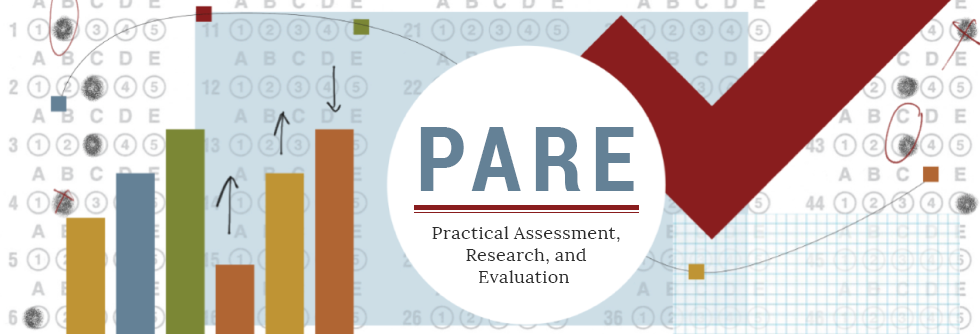About This Journal
Aims and Scope
Practical Assessment, Research & Evaluation (PARE) is an on-line journal providing access to refereed articles that can have a positive impact on assessment, research, and evaluation. Manuscripts published in PARE are scholarly syntheses of research and ideas about methodological issues and practices, and offer a clear and unique contribution to the literature. PARE is intended to help members of the community keep up-to-date with effective methods, trends, and research developments from a variety of settings.
PARE is committed to highlighting research that focuses on equity in assessment and measurement. To that end, we encourage the submission of manuscripts that address issues of equity and fairness – particularly articles that focuses on the assessment experiences and outcomes for historically marginalized populations.
Content
PARE publishes the following types of papers:
- Research Articles report on an empirical research study conducted by the author(s), guided by research question(s) or a hypothesis or hypotheses, using specific methods, which reports on the results of the study, explains the significance of the study for practice, with limitations noted.
- Overview Papers serve as an introduction to a topic. Its audience is individuals, whether professional or general, who wish to acquire introductory information on the topic treated in the paper. The aim of these papers to educate and/or instruct.
- Methods Papers demonstrate how to apply a technique. These would be useful as class hand-outs.
- Fact Sheets provide current information of a factual nature related to a topic. As appropriate, it also interprets and discusses the facts presented. Its primary audience is policymakers, administrators, and other decisionmakers; its secondary audience is other professionals and members of the general public who are interested in factual information on the topic.
- Issue Papers define and describe a controversial topic. It does not resolve controversies in the literature or practices, but it delineates the various perspectives related to the topic. Its audience is individuals, both professional and general, who wish to become informed about alternative perspectives on educational issues.
- Practice Applications provide specific, concrete examples of how practitioners can apply research results in practical settings. Its primary audience is educational practitioners, while its secondary audience is other educators interested in the topic.
- Research Findings which present the current status of research in an area. It summarizes and synthesizes recent findings from relevant research. Its primary audience is those individuals who wish to become informed about research findings, including researchers, graduate students, policymakers, administrators, and teachers.
Regarding appropriateness of submissions to the aims and scope of the journal, the two key considerations are the extent to which the submission and any findings or results reported generalize, and whether the manuscript is likely to impact practice. Thus, PARE does not accept evaluations of local programs without generalization potential or validity studies of test instruments. These decisions are at the discretion of the Co-Editors.
Why Submit to PARE
There are many practical advantages to publishing your article in PARE.- Your article will join others published by leaders in educational assessment, research and evaluation.
- Your article will have the potential to be seen by an extremely large audience. The typical article in a print journal is read by only 300-500 people. The average number of downloads is well over 10,000 for every article in PARE, historically speaking. You can expect thousands more people to see your paper by publishing your article online in PARE.
- Your article will be indexed in major internet and academic search engines.
For the PARE factsheet, click here,
